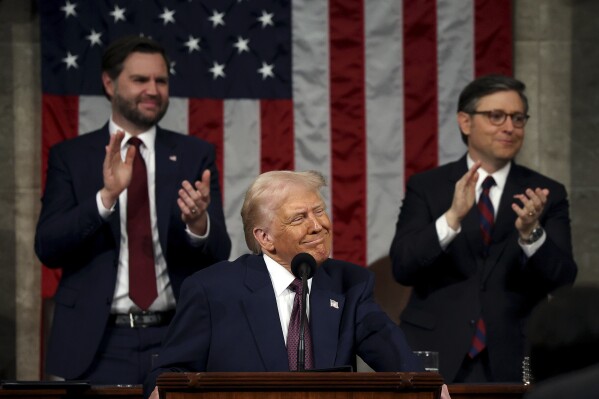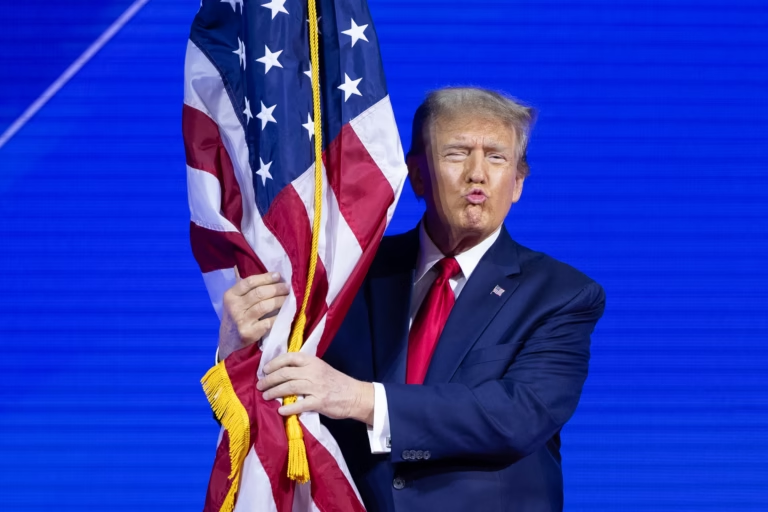On March 4, 2025, President Donald Trump delivered a historic address to a joint session of Congress, marking his first such speech since returning to office. Spanning nearly 100 minutes—the longest presidential address in history—the speech underscored the deep partisan divide within the United States.

President Donald Trump during a joint session of Congress at the Capitol in Washington, Tuesday, March 4, 2025. (Win McNamee/Pool Photo via AP)
Economic Policies and Tariff Stance
Central to President Trump’s address was his defense of the administration’s economic strategies, particularly the implementation of tariffs on nations like China, Canada, and Mexico. He acknowledged that these measures might cause a “little disturbance” but emphasized their necessity in “making America rich again.” Trump asserted that tariffs are not merely about safeguarding American jobs but also about “protecting the soul of our country.”
However, this perspective faced criticism from within his own party. Senator Rand Paul of Kentucky cautioned that such tariffs could lead to increased prices for essential goods, including lumber, steel, and aluminum, thereby affecting the affordability of homes and cars. Paul highlighted the potential repercussions of retaliatory tariffs, which could diminish U.S. exports and overall trade prosperity.
Healthcare and Social Programs
The president’s address also touched upon the future of social programs, notably Medicaid. While Trump did not explicitly mention cuts, his broader fiscal policies have raised concerns among Democrats. Representative Al Green of Texas, a vocal critic, was removed from the chamber after protesting unappropriately the president’s perceived mandate to reduce Medicaid funding.
Partisan Reactions and Public Perception
The address highlighted the stark partisan divide in contemporary American politics. While Republicans frequently applauded the president’s remarks, many Democrats remained seated, some displaying signs of protest or exiting the chamber altogether. This division extended beyond the halls of Congress. A CNN poll revealed that 69% of viewers had at least a somewhat positive reaction to the speech, with 44% describing it as “very positive.”

